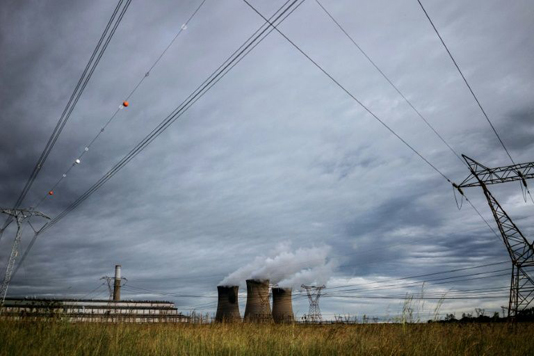JOHANNESBURG, Dec 15, 2019 (BSS/AFP) – As if choreographed by a puppet
master, stores along the aisle of a Johannesburg mall hurriedly shut their
doors one by one as soon as power outages strike slap-bang in the middle of
the day.
“We have to close the store immediately because people can steal… the
card machines also don’t work without electricity,” a 23 year-old clothing
retail worker told AFP.
Since 2008, state utility Eskom has sporadically implemented rolling
blackouts — rationing up to 4,000 megawatts at a time — to help prevent a
collapse of the electricity grid, a process known as “load shedding”.
But this week, the crisis suddenly worsened as Eskom rationed 6,000
megawatts from the national power grid, prompting the worst cuts in the
country so far.
The power outages have caused many businesses to lose out on hours of
sales during the peak festive season, threatening an already fragile economy.
“Most of them have to close shop as they can’t afford alternative
solutions such as generators and renewable energy such as solar systems,” the
CEO of the Black Business Council, Kganki Matabane, told AFP.
Across town about 60 kilometres (40 miles) south of Johannesburg in the
crucial industrial manufacturing hub known as the Vaal Triangle,
industrialists reel from the unstable supply of power.
“The big industries that start up furnaces lose an obscene amount of money
when there are blackouts,” said Jaco Verwey, vice-chairman of the Golden
Triangle Chamber of Commerce.
“Firstly they lose money on downtime. Secondly they lose money on
restarting again because they need more electricity to restart their
furnaces.”
The organisation boasts around 450 member businesses, 33 of which pay a
combined electricity bill of 100 million rands ($6.8 million) a month.
Businesses, big and small, are plunged daily into darkness for nearly five
hours at a time, sometimes even multiple times a day.
– Electrifying losses –
Large underground mines, among the largest contributors to GDP, suspended
some shifts this week to avoid trapping miners in the belly of the earth when
the electricity cuts out.
AngloAmerican spokesman Sibusiso Tshabalala told AFP that its “South
African operations have been impacted by Eskom load shedding”.
“While we have response plans … this is not a sustainable solution as it
is costly to run generators,” he said, adding that sustained power outages
resulted in reduced revenues and production.
Hundreds of tourists, hoping to catch the aerial cableway at the top of
Table Mountain, were left stranded for nearly three hours this week after
load shedding escalated to stage 6.
Even telecommunications networks were forced to beef up on backup power to
maintain customers’ connectivity during load shedding.
African giant MTN reportedly spends up to 100 million rand on battery
generators for every three days of electricity blackouts.
But for some, like retailer Shoprite, the outages have resulted a spike in
sales of alternative energy and lighting products such as candles, paraffin,
gas bottles, emergency lights and kettle braais.
“South Africans often use load shedding as an opportunity to cook on the
braai (barbeque),” the Shoprite group told AFP.
Eskom blames its old and poorly maintained coal-fired power stations which
struggle to keep up with the electricity demands of Africa’s most
industrialised economy.
The debt-laden utility generates around 95 percent of the country’s
electricity.
South Africans were so livid about the power outages that President Cyril
Ramaphosa cut short an official visit to Egypt to come back and meet with
Eskom executives.
Upon his election in May, Ramaphosa vowed to turn around all state
entities but Eskom has proved to be “the villain that leaps out of the bath
in a rage when you thought that he was dead,” as author and analyst Howard
Feldman describes it.
Ramaphosa critics, as well as his supporters, say he will need to improve
the economy if he wants a second term in power.
– ‘Nail in the coffin’ –
Many say the current crisis is a result of years of mismanagement and
corruption during the decade of Jacob Zuma’s presidency.
Despite multiple bailouts, including the latest $4 billion lifeline by
parliament, Eskom said it expects overall debt to rise to the equivalent of
$30.8 billion in the fiscal year ending March 31, 2020, up from $30 billion a
year earlier.
Eskom forecasts a net loss of 20 billion rand for the year.
Calling it “too big to fail”, Ramaphosa unveiled plans to improve the
utility’s performance by breaking it up into three units, saying that the
current system was “unreliable” and “unpredictable”.
Power insecurity has weighed on the sluggish South African economy,
already dogged by high and rising debt, low growth and record-high
unemployment of 29 percent over the last decade.
“Job creators are retrenching staff and/or going out of business,” warned
the CEO of the National Small Business Chamber, Mike Anderson.
Analysts at wealth asset management company Anchor Capital said the level
of load shedding has heightened concerns that the economy could slip into
another recession.
Indigo Ellis, an analyst at Verisk Maplecroft echoed this sentiment,
saying “power cuts are (the) nail in the coffin for economic growth”.
Growth contracted further by 0.6 percent in the third quarter of 2019,
after falling 3.2 percent in the first quarter.



